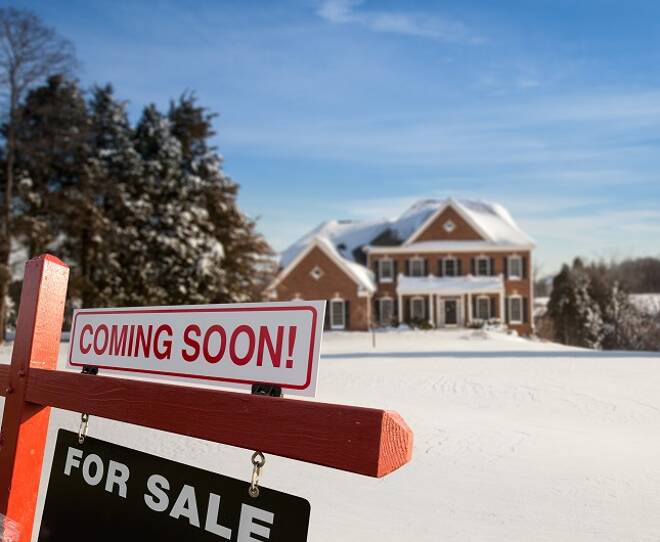Advertisement
Advertisement
U.S Mortgage Rates Hold Steady as Demand Continues to Rise
By:
30-year mortgage rates saw a 2nd weekly gain last week, albeit minor. It could be back into the red in the week ahead, however...
Mortgage rates increased for a 2nd consecutive week in the week ending 11th June, marking a 6th weekly gain in 12-weeks.
30-Year fixed rates increased by 3 basis points to 3.21%. In the previous week, 30-year fixed rates had also risen by 3 basis points to 3.18%.
Compared to this time last year, 30-year fixed rates were down by 61 basis points.
30-year fixed rates were also down by 173 basis points since November 2018’s most recent peak of 4.94%.
Economic Data from the Week
Economic data was on the lighter side through the 1st half of the week.
Key stats included April’s JOLTs job openings, May inflation figures, and the weekly jobless claims numbers.
Following the better than expected nonfarm payroll numbers from the previous week, however, the stats took a back seat in the week.
Dire economic projections from the World Bank and OPEC did weigh on risk appetite in the early part of the week.
On Wednesday, it was the FOMC monetary policy decision, economic projections and FED Chair press conference, however, that garnered the greatest interest.
FED Chair Powell poured cold water on hopes of a speedier economic recovery, leading to a fall in Treasury yields.
In spite of a marked fall in yields, mortgage rates held steady, with the May labor market numbers from the previous Friday providing support.
Freddie Mac Rates
The weekly average rates for new mortgages as of 11th June were quoted by Freddie Mac to be:
- 30-year fixed rates rose by 3 basis points to 3.21% in the week. Rates were down from 3.82% from a year ago. The average fee increased from 0.7 to 0.9 points.
- 15-year fixed remained unchanged at 2.62% in the week. Rates were down from 3.26% compared with a year ago. The average fee increased from 0.7 to 0.8 points.
- 5-year fixed rates held steady at 3.10% in the week. Rates were down by 41 points from last year’s 3.51%. The average fee remained unchanged at 0.4 points.
According to Freddie Mac, the rebound in homebuyer demand continued in the week, supported by mortgage rate levels. This turnaround in demand, particularly by those who have higher incomes than the typical household, also reflects deferred sales from spring.
Mortgage Bankers’ Association Rates
For the week ending 5th June, rates were quoted to be:
- Average interest rates for 30-year fixed, backed by the FHA, decreased from 3.46 to 3.38%. Points increased from 0.23 to 0.24 (incl. origination fee) for 80% LTV loans.
- Average interest rates for 30-year fixed with conforming loan balances increased from 3.37% to 3.38%. Points remained unchanged at 0.30 (incl. origination fee) for 80% LTV loans.
- Average 30-year rates for jumbo loan balances increased from 3.66% to 3.70. Points decreased from 0.30 to 0.26 (incl. origination fee) for 80% LTV loans.
Weekly figures released by the Mortgage Bankers Association showed that the Market Composite Index, which is a measure of mortgage loan application volume, increased by 9.3% in the week ending 5th June. In the week prior, the Index had decreased 3.9%.
The Refinance Index increased by 11% and was 80% higher than in the same week a year ago. In the previous week, the Refinance Index had fallen by 9%.
The refinance share of mortgage activity increased from 59.5% to 61.3% of total applications in the week. In the week prior, the share had fallen from 62.6% to 59.5% of total applications.
According to the MBA:
- Both mortgage applications and refinances were on the rise. Pent-up demand from earlier in the spring, low mortgage rates, and the reopening of states across the U.S fueled demand.
- Purchase activity increased for an 8th consecutive week as was up by 13% from a year ago.
- Refinances moved higher for the first time in almost 2-months.
For the week ahead
It’s a relatively busy 1st half of the week for the Greenback.
Key stats from the U.S include May retail sales and industrial production figures, June manufacturing numbers and the weekly jobless claims.
With U.S states having begun to ease lockdown measures back in May, the market will be looking for a bounce back in spending.
The FED’s gloomy outlook on the economy could provide to be right, however. Unemployment levels are extremely high, which may limit any major rebound in retail sales.
June manufacturing numbers are also in focus, with the NY Empire State Manufacturing Index and Philly FED Manufacturing Index due out.
On the housing front, we would expect building permits and housing starts to have a muted impact, however.
Mid-week, FED Chair Powell could give the markets a 2nd dose of reality as he delivers testimony to Congress.
From elsewhere, industrial production figures from China will draw attention as will news updates on the coronavirus.
About the Author
Bob Masonauthor
With over 28 years of experience in the financial industry, Bob has worked with various global rating agencies and multinational banks. Currently he is covering currencies, commodities, alternative asset classes and global equities, focusing mostly on European and Asian markets.
Advertisement
